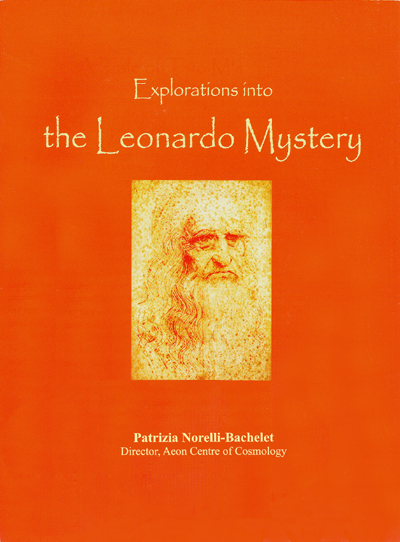 Summary: In Explorations into the Leonardo Mystery Patrizia Norelli-Bachelet (Thea) discusses the zodiac as the system of wholistic knowledge that Leonardo DaVinci conveys in his artwork. The 12 signs of the zodiac figure prominently in The Last Supper, with special emphasises on the signs of Virgo
Summary: In Explorations into the Leonardo Mystery Patrizia Norelli-Bachelet (Thea) discusses the zodiac as the system of wholistic knowledge that Leonardo DaVinci conveys in his artwork. The 12 signs of the zodiac figure prominently in The Last Supper, with special emphasises on the signs of Virgo and Scorpio
which explain Mary Magdalene's dual persona as the 'Virgin' mother of Jesus and a prostitute. The imagery and symbolism in Leonardo's art demonstrates that he knew the zodiac to be an evolutionary journey in which the 8th sign Scorpio represents the point at which the vital energies are used for self-destruction (the Scorpion) or for illumination and fuel to manifest higher levels of consciousness (the Eagle). PNB discusses the the crucifiction of Jesus as a Scorpionic collapse of the individual's journey towards becoming the manifest divine. She exposes the choice before mankind: to collapse under our limited vision of God and material creation, or to labor on and achieve a higher vision and experience of the Self and the Cosmos. Images which are discussed in terms of their occult significance include The Vitruvian Man, St. Anne and the Virgin (cartoon), St. John the Baptist, La Gioconda (Mona Lisa), and the Rosicrucian Mysterium which places side by side the 'Shroud of Turin', and the 'Ark of Noah'. Readers are given both a sense of Leonardo's familiarity with and use of the zodiac as a system of knowledge, and a sense of why it is that throughout the history of mankind, this system lives on through all manner of civilizations, religions, mythologies, artwork, etc.
This 29 page booklet has a number of colored illustrations and is printed in the style of a magazine.
The essay was originally written in 2005 and the booklet published by Aeon Books in 2008.
Size: 7" x 9.5" - $9.00
Leonardo's use of the Zodiac: ‘... I would like to draw attention to the 'system' Leonardo made use of to convey a complex and synthetic body of knowledge, as it is defined in esoteric traditions ... Leonardo used the theme of a last supper because it was a perfect vehicle for transmitting the esoteric content of that system which had already been lost by the 15th and 16th Centuries. Together with the Goddess factor, to which it was intrinsically connected, this system was forced underground. Fragments remain above the surface to this day. But what was lost was the great secret Leonardo conveyed in his fresco: the unity of the knowledge, its wholeness.
'The only masking factor is fragmentation. Without the key to that unity, the viewer is blind. What we see taking place today is an attempt to discover codes through those bits and pieces of a 'secret' whose very essence is that wholeness. But what this worldwide fascination with Leonardo does indicate is that the orthodoxy which besieged free minds of Renaissance Italy no longer has the power to 'sting'...
'The system Leonardo conveys in The Last Supper is the zodiac of twelve signs, - in other words, Christ is the 'sun' around which revolve the twelve disciples/signs. But there is far more than just symbolic imagery in The Last Supper. Leonardo carries us into the heart of a theological controversy: the question of a crucified Son.' pp. 1-2
The Crucificion: 'Was the crucified Jesus ... simply a part of the wisdom carried over from pre-Christian times and taken directly from the zodiac - not 'historic' in the sense we know history today but rather representative of the eternal Tradition which is an initiation open to each and every human being on this planet? We can go the way of the crucifiction and see Mary Magdelene as a prostitute, just as Christian theology was devised during the Dark Ages. Or we can move with her, the very same Magdelene, away from agony and sin and death to the higher symbol, we ourselves become that. After all, the zodiac IS OUR BIRTHRIGHT. Anyone born on this planet IS THAT: we carry this harmony in our very genes. The 'code' is this cosmic rhythm that the annual rotation of our planet marks out in her journey around the Sun which we divide into twelve parts.' pp. 14-15
Gospel of Judas: 'After concluding this essay in July of 2005, a number of intriguing events happened connected to the theme of my essay. Foremost was the appearance of The Gospel of Judas. ... the contents of the Judas Gospel corroborate everything we have presented in this essay.' p. 28